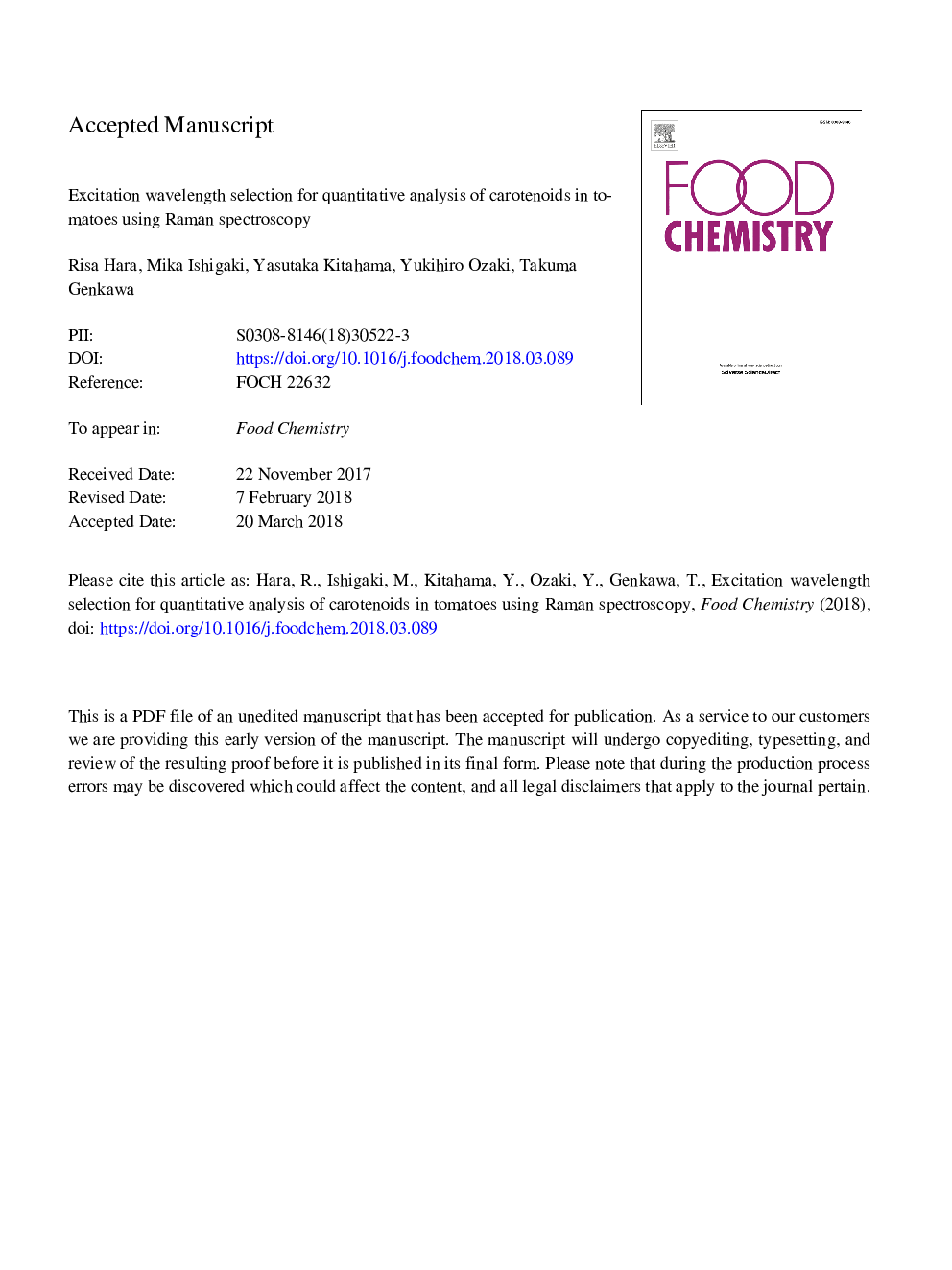| Article ID | Journal | Published Year | Pages | File Type |
|---|---|---|---|---|
| 7585218 | Food Chemistry | 2018 | 34 Pages |
Abstract
The difference in Raman spectra for different excitation wavelengths (532â¯nm, 785â¯nm, and 1064â¯nm) was investigated to identify an appropriate wavelength for the quantitative analysis of carotenoids in tomatoes. For the 532â¯nm-excited Raman spectra, the intensity of the peak assigned to the carotenoid has no correlation with carotenoid concentration, and the peak shift reflects carotenoid composition changing from lycopene to β-carotene and lutein. Thus, 532â¯nm-excited Raman spectra are useful for the qualitative analysis of carotenoids. For the 785â¯nm- and 1064â¯nm-excited Raman spectra, the peak intensity of the carotenoid showed good correlation with carotenoid concentration; thus, regression models for carotenoid concentration were developed using these Raman spectra and partial least squares regression. A regression model designed using the 785â¯nm-excited Raman spectra showed a better result than the 532â¯nm- and 1064â¯nm-excited Raman spectra. Therefore, it can be concluded that 785â¯nm is the most suitable excitation wavelength for the quantitative analysis of carotenoid concentration in tomatoes.
Related Topics
Physical Sciences and Engineering
Chemistry
Analytical Chemistry
Authors
Risa Hara, Mika Ishigaki, Yasutaka Kitahama, Yukihiro Ozaki, Takuma Genkawa,
